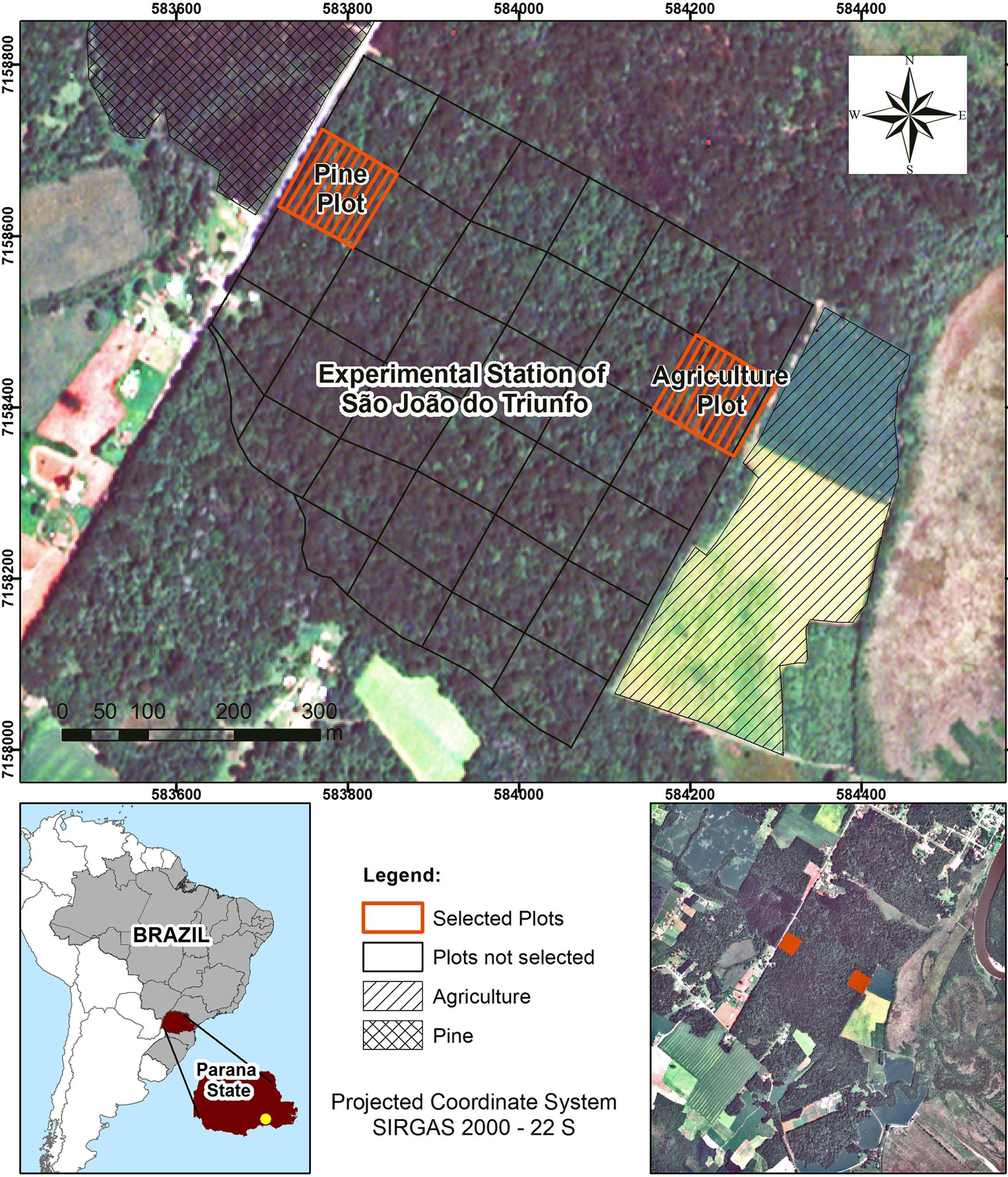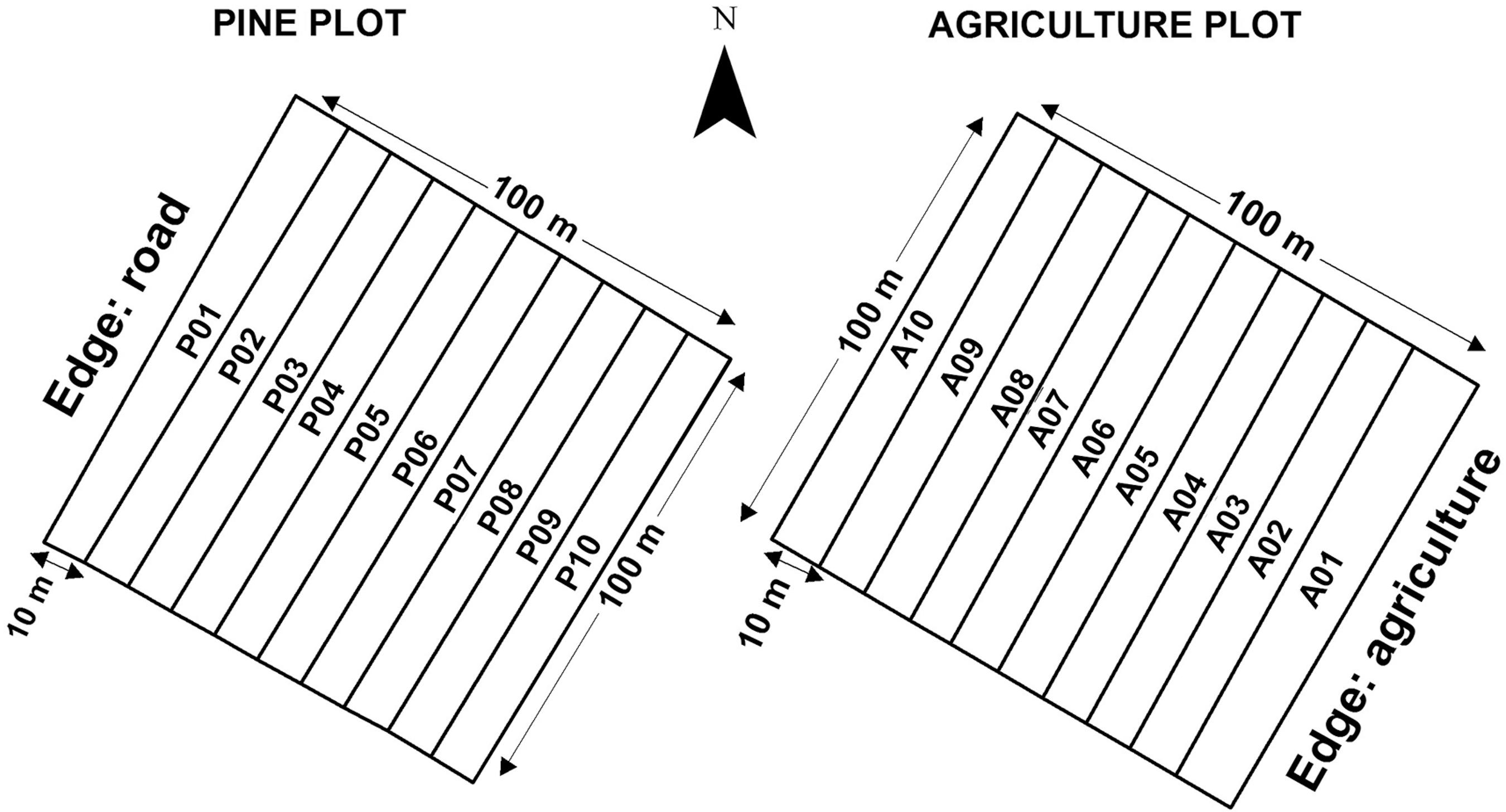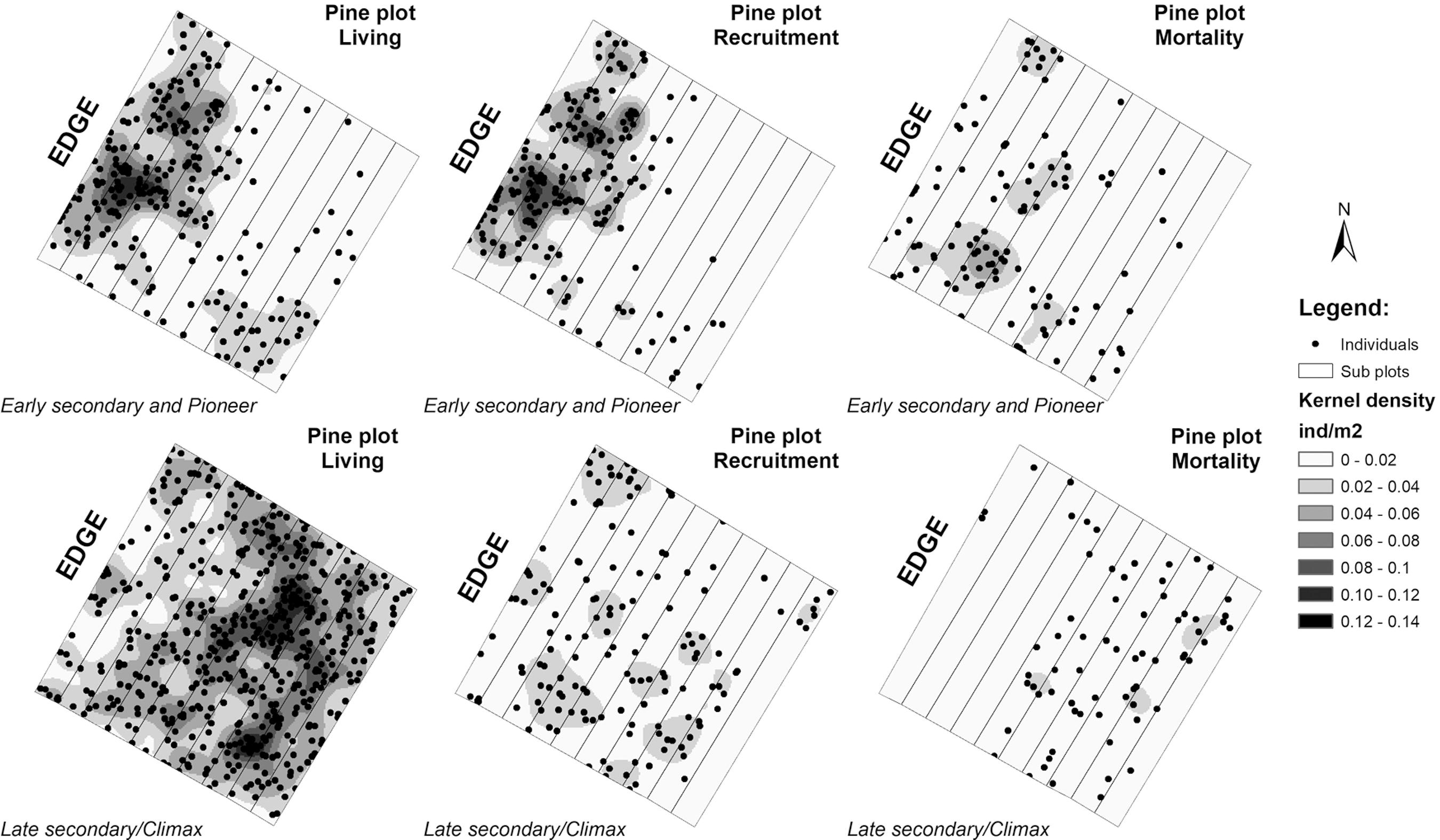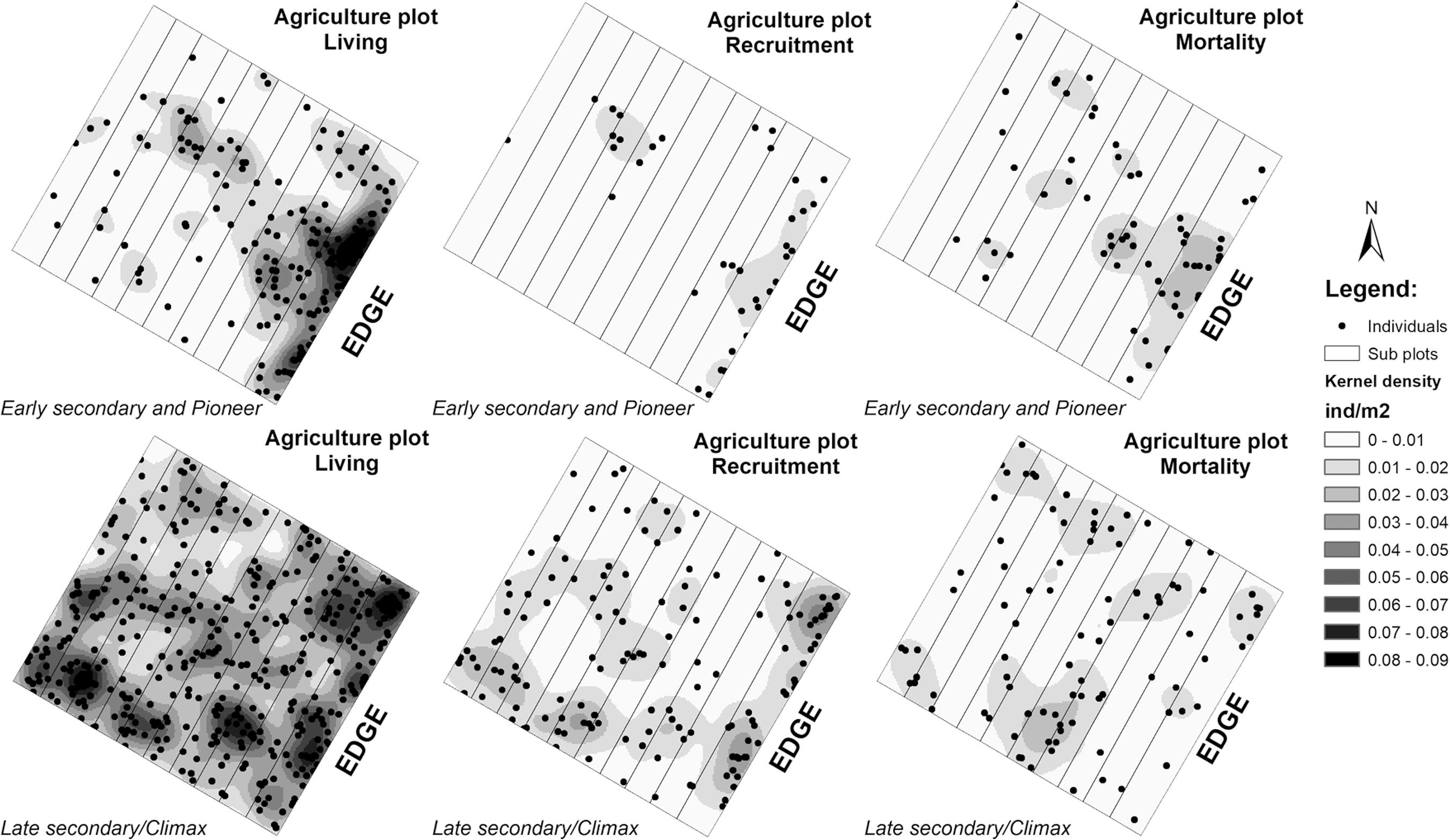Abstract
The objective of this research was to evaluate which species in the Brazilian Araucaria forest have its spatial distribution influenced by edge effects. We performed annual forest inventories inside two one-hectare plots, divided in 10 rectangular subplots, delimited by every 10 meters of edge distance. Each tree with at least 10 cm at DBH was identified to species level, and their allometric measurements and geographical coordinates were recorded considering the categories living, recruitment and mortality. We analyzed the correlation between the abundance of each species in each subplot and its distance by the Spearman's Correlation Coefficient and a Generalized Additive Model (GAM) with a Poisson distribution. We analyzed the distribution of some species and the ecological groups using a Kernel density model. We observed numerous pioneers and early secondary species with relationship with the edge distance, usually concentrated close to the edges. The late secondary/climax species are more evenly distributed in the plots, despite of some species, as Eugenia uniflora, are negatively affected by the edge. From these results, it is observed that some light demanding species can be favored to live close to the edges, even if some shadow tolerant species can inhabit this region as well.
Key words:
Atlantic forest; ecological groups; forest fragmentation






